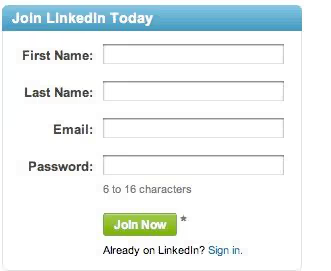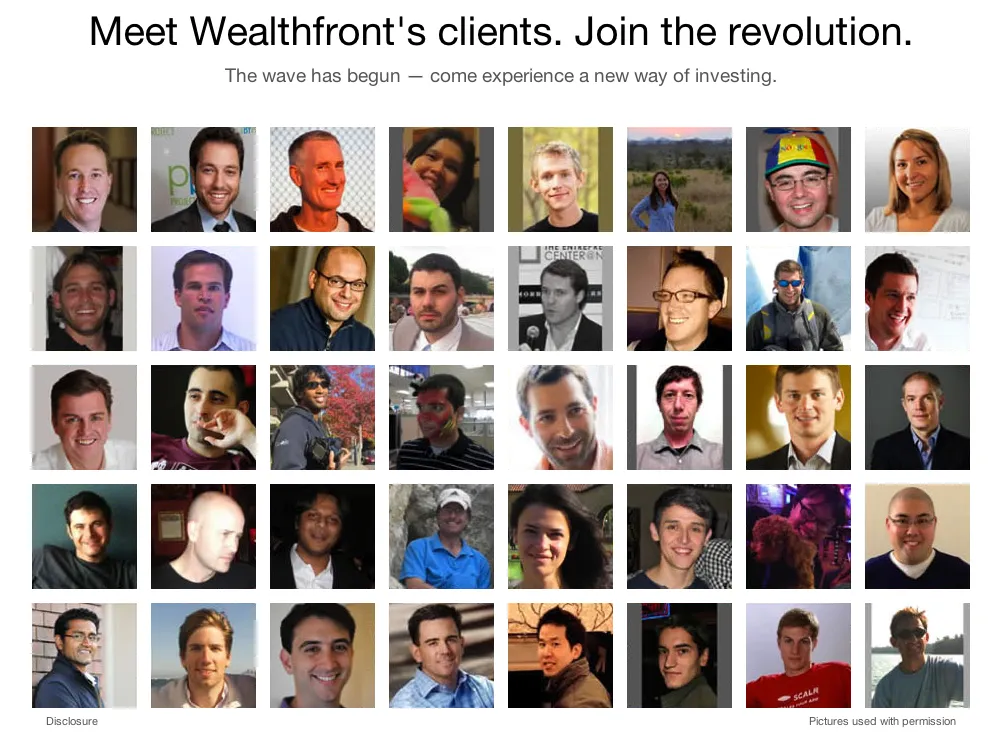Ex-LinkedIn Product Manager on Reproducible Growth Hacking
 We were lucky enough to hear from Elliot Shmukler, a Growth Hacking expert and Ex-LinkedIn Senior Director of Product Management, at Growth Hacker Conference in San Francisco a short while ago.
We were lucky enough to hear from Elliot Shmukler, a Growth Hacking expert and Ex-LinkedIn Senior Director of Product Management, at Growth Hacker Conference in San Francisco a short while ago.
Elliot is the man responsible for almost half of LinkedIn's page views through product initiatives such as profile, search, contacts, new user registration, people you may know and who's viewed my profile. Elliot is now the VP of Product and Growth at Wealthfront Inc which, combines world-class financial expertise and leading edge technology to provide sophisticated investment management at prices affordable for everyone.
Elliot took the time to share some very pragmatic and actionable advice with us about solving a problem that almost every young startup dreams of.
Ok. I’m growing … now what?
This is what we call Success-tastrophe, a catastrophe that occurs because you were successful, and it's a problem that most startups only wish they had. For those companies that graduate through the Startup Stages of Growth, the Growth phase can be a little bewildering and foreign feeling.
Growth, unlike product market fit, is all about finding ways to do exactly what you do, for and with more people. Companies that are pre-growth, are typically pre-product market fit. In turn, these companies spend large amounts of time working on major changes such as their value prop, pricing or core features.
This sudden disconnect between the two stages leaves many companies asking, "Ok. I'm growing ... now what?"
Build a Growth Machine
Growth can be a systematic, trackable and repeatable process for your web company if you setup the proper foundation.
NOTE: For those of you who prefer to use the "divining rod" method of pure intuition and gut feel the rest of this article may not be for you.
Building a good growth machine is like laying a strong foundation for your house. If you lay a weak foundation, your house will easily collapse under pressure. However, a well-built growth machine will allow your startup's growth rate to continually accelerate regardless of the weather conditions.
Sean Ellis refers to something similar as the "Transition to Growth." In either case, it is core to remember that growth does not magically happen, and like most good things, it comes to those who work for it.
What do you do to build a growth machine?
Ok, so if a growth machine is so important, how do we go about building one?
Building a growth machine is simple if you just follow these 3 steps, and repeat as needed.
-
- Set Growth Goal
- Understand Drivers
- Optimize
Goals
If you're like me, people have been telling you to set goals all your life. However, like our friends over at Analytics Academy can tell you, not all goals are made equal. So, it's really important to set good growth goals.
1. Your Growth Goal Must be Measurable, and Quickly.
It's pretty obvious that you have to be able to measure a goal, to know when you've achieved it. However, most people don't think about the speed at which you measure goals. If you can measure a goal in 10 days, and you competitor can only measure it in 30 days, you can run 3 times more test and be 3 times further ahead on average.
2. Aligned With Your Product or Business.
You probably have vanity metrics that you can easily increase. These are the metrics that can quickly go up and to the right but don't affect your bottom line. Make sure you select goals that result in improving your business objectives.
3. Make it a Single Number.
This can get a lot of push back from certain teams, but it really does help. If your team is focused on improving a single number, it is much easier to get everyone pointed in the same direction than if you are trying to optimize 17 different metrics simultaneously. Please remember that by picking a single number it doesn't mean you are ignoring your other metrics, you just aren't optimizing them.
Understand Driver
If you don't know why people are doing something, it's very hard to encourage them to do more of it. Putting yourself in your customers' shoes can help you see through their eyes and begin to understand what is driving them. However, good growth hackers never underestimate the importance of talking to customers. Finding ways to ask customers about how they use your product with give you more insights into their motivations than you know what to do with.
To further understand growth drivers it's valuable to work backwards from your goal. Understanding exactly where a customer comes from and how they get to your final goal will expose opportunities for optimization. Plotting the complete path of a customer ensures that you can think about optimizing the complete customer story instead of an obscure random part of it.
Optimize
Once you understand your goals and your growth drivers you can focus on improving your metrics to meet your goals. While optimization can seem like a daunting, and never ending task, there are only 3 ways to optimize your metrics.
Reduce Friction - Make it simpler for me to do
This really isn't rocket science. Hard things are hard, and easy things are easy. You want it to be as easy as possible for your customers to achieve your goals.
Example:
LinkedIn turned their signup form from 10 fields to only 4 fields. This resulted in an approximate 20% increase in signups. That's not a bad return just for taking some form fields off a page.
Example:
When LinkedIn launched endorsements they made it a single click action. You don't have to select a list of possible skills, search through your connections and then prove you're a human. You just press a single button and your connection is endorsed. It doesn't get any more low friction than that.
Increase Incentive - Give me a better reason to do it
The old saying "everyone has a price" is one of the best, and probably most honest, pieces of advice you can ever take when optimizing your web app. Users are only going to complete tasks when they feel there is a big enough reward for doing so.
Example:
Social proof may not be the most obvious incentive, but it works. Wealthfront shows you some of their existing customers in order to prove to you others are getting value from their product. The incentive is then that you too can get this benefit if you only signup.
Example:
A more direct example of an incentive is the Wealthfront Invite Program. Users may not think it's worth their time and effort to refer a friend to Wealthfront for free. However, when they are offered a discount for making a referral the incentive can become high enough to change their behavior and illicit a referral.

Increase Exposure - Ask me to do it more often, more prominently, or in more places.
Increasing exposure is one of the least obvious forms of optimization but is equally effective. Simply prompting a users to complete an action more frequently and in different ways is a sure fire way to increase conversion. It is worth varying both frequency and method to see which produces the best result.
Example:
People you may know is a prime example of increasing exposure on LinkedIn. The box is at the top of almost every page in order to be exposed to users at all times. Further, once you’ve connected to one users, you are asked to keep connecting with more until you get bored.
The TL;DR Recap
Set Growth Goals that are
-
-
- Measurable,
- Aligned,
- and A single number.
-
Understand Drivers by
-
-
- Working backwards from your goals,
- and mapping how users get there.
-
Optimize by:
-
-
- Removing friction,
- Increasing incentive,
- and increasing exposure.
-



